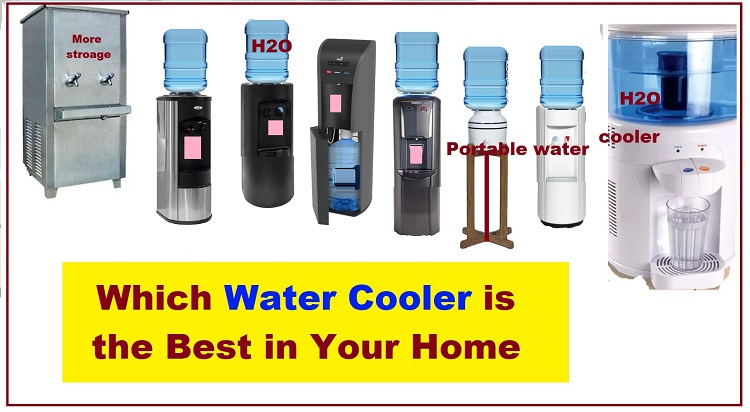History of Water Coloring
Water coolers have become a staple in offices and public spaces, providing a source of refreshing hydration to anyone in need. But beyond its practical function, the water cooler has become a cultural icon, representing a space for socialization and bonding. In this blog post, we’ll explore the history and significance of the water cooler, and why it remains an important fixture in our daily lives.
The water cooler can trace its roots back to the early 20th century when electric refrigeration became more widely available. Before this, water was often stored in ceramic or metal containers, which were either too heavy to move or too difficult to keep cool. With the invention of electric refrigeration, water could be chilled and stored in a more convenient manner, making it accessible to more people.
The first commercial water coolers were introduced in the 1930s, and were primarily used in factories and other industrial settings. However, it wasn’t until the 1950s and 60s that the water cooler became a ubiquitous fixture in offices and public spaces. At this time, many companies began to offer water coolers as a perk to their employees, recognizing the importance of hydration and its impact on productivity and well-being.
Over the years, the water cooler has evolved from a simple device that dispenses chilled water to a hub for socialization and community building. In many workplaces, the water cooler has become a gathering spot for employees to catch up on the latest news and gossip, share ideas and opinions, and build relationships with one another.
Cooling of Drinking Water
- Cooling drinking water is important to ensure that it is safe and refreshing to drink. When water is stored at room temperature or in warm conditions, it can become a breeding ground for bacteria and other harmful microorganisms
- Drinking warm water can also be unappealing, particularly in hot weather. Therefore, cooling drinking water is an essential step in maintaining its quality and making it more pleasant to consume
- Here are some methods for cooling drinking water:
Refrigeration:
- One of the most common and effective ways to cool drinking water is to store it in the refrigerator
- Simply fill a container with water and place it in the fridge for a few hours until it reaches the desired temperature
- This method is convenient and does not require any additional equipment.
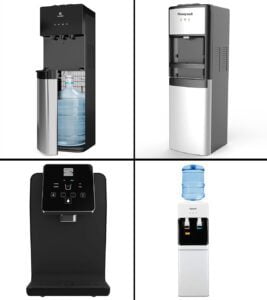
Ice:
- Another simple way to cool drinking water is to add ice cubes to it. This can be done by either placing ice cubes directly in the water or using an ice cube tray to freeze water and then adding the ice cubes to the water. This method is quick and easy, but may not be as effective as refrigeration in cooling large quantities of water.
Cooling jug or container
- There are jugs and containers available that are designed to cool water by keeping it at a lower temperature for an extended period of time
- These jugs and containers often use materials such as insulation or ice packs to keep the water cool
- This method is particularly useful for outdoor activities such as picnics or camping trips.
Water cooler:
- A water cooler is a device that can be used to dispense cool water
- These devices work by cooling water and then dispensing it through a tap. Water coolers are often used in offices, gyms, and other public spaces, but can also be used in homes
- They can be either electric or non-electric, with non-electric models being more environmentally friendly
- It is important to note that while cooling water can help to maintain its quality, it does not purify it. Drinking water should always be treated and purified before consumption to ensure that it is safe to drink. This can be done through methods such as boiling, filtration, or using water purification tablets.
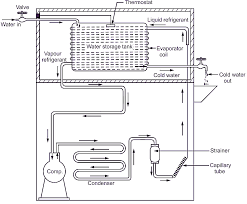
Water Cooler
- The water cooler is a fixture that has been a mainstay in offices and public spaces for decades. It’s a place where people gather to take a break, grab a drink of water, and chat with their colleagues or friends. However, the water cooler is much more than just a dispenser of refreshing beverages – it’s a symbol of community, camaraderie, and conversation.
- Historically, water coolers were first introduced in the workplace as a way to provide employees with access to clean drinking water. In the early 1900s, many workers had to bring their own water to work or rely on dirty water sources. With the introduction of the water cooler, employers were able to ensure that their employees had access to clean and safe drinking water throughout the day.
- Over time, the water cooler became more than just a practical solution to a basic need.
- It became a gathering place where employees could take a break, chat with each other, and form relationships outside of the work they were doing. It’s a place where coworkers can share stories, exchange ideas, and build connections that can help them be more productive and work better together
- Even in the age of remote work and virtual meetings, the water cooler remains an important part of office culture. While physical water coolers may not be as prevalent as they once were, the concept of a water cooler conversation still exists. In many ways, these impromptu chats and exchanges are even more important now, as they help to build relationships and foster a sense of community in a remote work environment.
- Water coolers also serve as a reminder of the importance of taking breaks and staying hydrated. Drinking enough water throughout the day can improve productivity, focus, and overall well-being. Taking a few minutes to step away from work and chat with colleagues can also be a valuable way to recharge and refresh the mind
- the water cooler is much more than just a dispenser of water. It’s a symbol of community, conversation, and connection. While the physical water cooler may be disappearing in some workplaces, the concept of the water cooler conversation remains as important as ever. So, the next time you take a break to grab a drink of water, take a moment to appreciate the power of the water cooler and the connections it can help you build with your colleagues.
Water Dispenser
- A water dispenser is a device that dispenses clean and filtered water for drinking or other purposes. It typically consists of a water reservoir, a filtration system, and a dispenser mechanism that delivers water on demand.
- There are several types of water dispensers available, each with its own features and benefits. Here are some of the most common types:
- Countertop water dispensers: These are small, portable units that sit on a countertop or table. They are typically designed for personal use and can hold a few gallons of water. Countertop dispensers are ideal for small offices, apartments, or dorm rooms.
- Freestanding water dispensers: These are larger units that stand on the floor and can hold several gallons of water. They are designed for high-volume use and are ideal for larger offices or commercial settings.
- Bottom-load water dispensers: These units have a water reservoir at the bottom that is filled by inserting a water bottle upside down. This makes them easier to refill than top-load dispensers.
- Top-load water dispensers: These units have a water reservoir on top that is filled by placing a water bottle right side up. They are less convenient to refill than bottom-load dispensers but can hold larger bottles.
- Hot and cold water dispensers: These units have two dispensers, one for hot water and one for cold water. They are ideal for making tea or coffee or for providing hot water for instant soup or oatmeal.

- Water dispensers are typically equipped with a filtration system that removes impurities from the water, such as chlorine, lead, and other contaminants. Some water dispensers also have a UV light that sterilizes the water to eliminate bacteria and viruses.
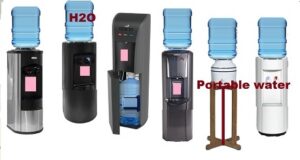
- In addition to providing clean and filtered water, water dispensers can also be a more sustainable and eco-friendly alternative to bottled water. By using a water dispenser, you can reduce the amount of plastic waste generated by disposable water bottles
- Overall, a water dispenser is a convenient and practical device that provides clean and filtered water for drinking or other purposes. With a variety of types and features available, there is a water dispenser to meet the needs of any setting, from small homes to large offices and commercial spaces.
Parts of the Water Dispenser
A water dispenser typically consists of the following parts:
- Water reservoir: This is where the water is stored. It is usually made of plastic and can hold a few gallons of water.
- Water dispenser unit: This is part of the dispenser that dispenses the water. It can either be a spigot or a push button.
- Heating element: This part is found in water dispensers that provide hot water. It heats the water as it flows through the dispenser.
- Cooling element: This part is found in water dispensers that provide cold water. It cools the water as it flows through the dispenser.
- Compressor: This is found in some water dispensers that have a refrigeration system to cool the water.
- Drip tray: This is the tray located under the dispenser unit that catches any water that drips or spills.
- Filters: Some water dispensers have filters that remove impurities from the water.
- Thermostat: This part is found in water dispensers that have a heating element. It regulates the temperature of the water.
- Control Panel: This is part of the dispenser where you can adjust the temperature and other settings.
- Power cord: This is the cord that connects the water dispenser to a power source.
Circuit Diagram of Water Dispenser
Evaporative Cooling
- Evaporative water cooling is a process that uses the natural cooling effect of water to cool the air in an environment. This cooling method is often used in hot and arid climates, where traditional air conditioning systems are less effective and more energy-intensive
- The basic principle of evaporative water cooling is presented in the previous post.
- Water is allowed to evaporate into the air, which causes the surrounding air to become cooler
- This process occurs because as the water molecules evaporate, they take heat energy from the surrounding air, reducing its temperature
- This is the same effect that causes sweat to cool our skin on a hot day
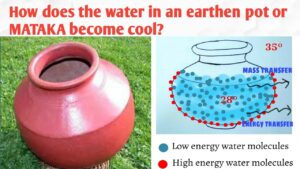
- The cooling effect of evaporative water cooling can be enhanced by using specialized equipment, such as an evaporative cooler or swamp cooler.
- These devices use a fan to draw warm air through a wetted pad or other material. As the air passes through the wetted pad, the water evaporates, cooling the air. The cooled air is then circulated back into the environment, providing a natural and energy-efficient cooling solution
- There are several advantages to using evaporative water cooling over traditional air conditioning systems
- First and foremost, evaporative cooling uses significantly less energy than air conditioning. This is because the process of evaporating water is much less energy-intensive than compressing refrigerant gases, which is how traditional air conditioning systems work. As a result, evaporative cooling can be a more environmentally friendly and cost-effective cooling solution

- In addition to being more energy-efficient, evaporative cooling can also provide other benefits. For example, because the air in an evaporatively cooled environment is more humid, it can help alleviate dry skin and respiratory issues associated with dry air
- Evaporative cooling can also be a more sustainable option in areas where water is plentiful, as it can use recycled or harvested water
- Despite its many benefits, evaporative water cooling does have some limitations.
- It is most effective in hot and dry climates, where the air is relatively dry and humidity levels are low. In more humid environments, the cooling effect of evaporative cooling may be less noticeable or even non-existent. Additionally, evaporative cooling may not be as effective in cooling large or heavily insulated spaces, such as office buildings or warehouses
- Evaporative water cooling is a natural and energy-efficient way to cool the air in hot and dry environments. It may not be suitable for all climates or environments, it can provide a cost-effective and sustainable alternative to traditional air conditioning systems. As the world continues to seek out more sustainable and eco-friendly solutions, evaporative water cooling is likely to become an increasingly popular choice for cooling homes, businesses, and other spaces.
Summary
- Water cooling is a highly effective method of cooling electronic components
- There are several different water cooling methods to choose from, each with its own benefits and drawback
- When selecting a water cooling method, it’s essential to consider factors such as cost, efficiency, and maintenance requirements
- With proper planning and installation, water cooling can provide improved performance and longevity for your electronic devices.
